Exploring School Choice and The Parent Revolution with Dr. Corey A. DeAngelis | LPP Ep. 965/14/2024 🎧 Join me on the Let People Prosper Show as I dive into a crucial discussion with Dr. Corey A. DeAngelis, a top voice in educational freedom and senior fellow at the American Federation for Children.
We unpack his latest book, "The Parent Revolution: Rescuing Your Kids from the Radicals Ruining Our Schools." Don't miss out as Dr. DeAngelis sheds light on: 👉 The current landscape of school choice in the U.S. 👉 Why school choice is essential and the challenges it faces. 👉 What the future holds for school choice and education savings accounts. 🔗 Follow @DeAngelisCorey on X for more updates! 💬 Like, subscribe, and share to support vital conversations about educational freedom. For more deep dives and updates, subscribe to my newsletter at vanceginn.substack.com and check out vanceginn.com for more resources. #EducationReform #SchoolChoice #ParentRevolution
1 Comment
Originally published at AIER.
In The Parent Revolution, Corey A. DeAngelis offers a compelling narrative that champions the transformative power of universal school choice in reshaping the American educational landscape. His detailed exposition on how school choice, especially through education savings accounts (ESAs), can fundamentally alter the trajectory of education makes this book an essential read for anyone interested in educational improvement, economic freedom, and societal betterment. Historical Context and Evolution DeAngelis pays homage to Milton Friedman, the intellectual progenitor of the school choice movement, and masterfully traces the evolution from Friedman’s voucher system to today’s more sophisticated ESAs. These accounts are not merely funds but keys to unlocking individual potential. By enabling parents’ direct financial control over their children’s education, ESAs facilitate a customized educational experience that can adapt to each student’s unique needs and aspirations. This paradigm shift from institutional funding to individual empowerment is more than a policy adjustment; It is a reclamation of educational agency. While my ideal situation would be for politicians and bureaucrats not to be involved in schooling or education, this seems unlikely in the short term, given some form of taxpayer-funded K-12 schooling is in the constitution of every state. We can, however, limit government involvement in education as much as possible. ESAs provide that path so parents are empowered to avoid a monopolistic government school system in favor of a more competitive market for education to meet their kids’ needs, whether that be government schools, private schools, homeschool, co-ops, tutoring, or something else. In short, we should “fund students, not systems,” as DeAngelis loves to say, and empower parents, not politicians and bureaucrats. Empirical Evidence and Societal Benefits DeAngelis uses abundant evidence to support the effectiveness of ESAs, detailing how states that have implemented these policies witness improved educational outcomes and broad societal improvements. In Arizona and Florida, for instance, where ESAs have been widely adopted, there has been a notable increase in student achievement and parental satisfaction. Moreover, he points to research indicating that school choice initiatives can reduce crime rates and support faster economic growth, underscoring the far-reaching impacts of educational freedom. Real-world examples and testimonials from families benefiting from ESAs add a poignant layer to his argument. These narratives are powerful, illustrating the flexibility of ESAs and their capacity to meet diverse educational needs — from specialized programs for the disabled to accelerated learning for the gifted. DeAngelis offers a scathing critique of the current public education system, which he rightly calls the “government school system,” focusing particularly on the disproportionate influence of teachers’ unions. He argues that they often prioritize adults’ interests over students’ educational needs, hindering reform and innovation. This critique highlights the entrenched resistance to school choice and positions ESAs as a solution for educational inefficiency and bureaucratic inertia. Moreover, he discusses the misallocation of resources in government schooling, where too much funding is absorbed by administrative overheads rather than being directed into classrooms. He advocates for a more efficient use of educational funds, where money follows the student rather than being tethered to potentially underperforming institutions. This book is not just an academic treatise but a practical guide for navigating and influencing the complex landscape of educational reform. It is a manifesto for those who believe in the power of education to elevate society and a toolkit for those ready to take part in this crucial endeavor. “The Parent Revolution” serves as a call to arms, providing readers with actionable steps for advocating school choice. DeAngelis outlines strategies for grassroots organizing, legislative engagement, and public persuasion, empowering readers to translate passive agreement into active participation in the educational reform movement. His vision extends beyond immediate educational outcomes. He envisages a society where educational freedom catalyzes lifelong benefits, preparing students not just for tests, but for life. His advocacy for ESAs is framed within a broader narrative of individual liberty and market efficiency. “The Parent Revolution” is a profoundly influential book that offers a clear, economically sound, and morally compelling case for universal school choice across America and the world. It is an indispensable resource for anyone interested in the intersection of education, economics, and policy. DeAngelis advocates for significant education reform and provides a detailed roadmap. His book reaffirms the critical role of choice and competition in improving education, making it a must-read for anyone interested in empowering parents and improving students’ educational outcomes. The key is, of course, to: “Fund students, not systems.” Originally published at Texas Scorecard.
Texas can pass bold school choice legislation when the next legislative session starts in January 2025. This could finally happen because of the recent election wins in the House primaries, efforts led by Gov. Greg Abbott. The election wins include pro-school choice candidates beating anti-school choice incumbents or filling seats of retiring anti-school choice members. More incumbents, including House Speaker Dade Phelan, were forced to a runoff in May. Moreover, 80 percent of Republicans voted for Proposition 11 on the primary ballot to support school choice, which matters in a dominantly red state. In the evolving educational reform landscape, universal education savings accounts (ESAs) provide the best path to empower parents to decide their children’s education. They are also a practical, fiscally responsible strategy for reimagining the future of education. At least 10 states have passed universal school choice, and more are likely to do so soon. But these states haven’t reached the pinnacle of what a competitive education system should look like. The optimal school choice approach should liberate education from the constraints of the monopoly government school system, draw upon successful market-driven solutions, and offer a simplified education finance system. The Texas Legislature essentially controls the current school finance system with funding from taxpayers through taxes collected by the state, school district, and federal governments. The inefficiency and ineffectiveness of the status quo are stark, including questionable but relevant declining test scores. This highlights a critical need for an approach that better serves students’ and families’ unique needs and aspirations. The state’s school finance system is based on many factors to the school system, but the Texas Education Agency recently reported that the average funding per student was $14,928 in the 2021-22 school year. Total funding was $80.6 billion for 5.5 million students. Of course, this is how much is spent, but the actual cost of the monopoly government school system is hidden and driven higher by politics rather than market outcomes. ESAs provide flexibility in covering many educational services, including various schooling options, tutoring, testing, and other related expenses. This empowers parents to customize their children’s education to suit individual learning styles and interests. This adaptability is vital for fostering environments where children excel academically, socially, and emotionally. Implementing a universal ESA program demands a framework that balances simplicity with accountability, ensuring the focus remains on expanding educational opportunities and improving student outcomes. While many current ESA programs run alongside the government school system, this doesn’t provide the most competitive framework. Running them in tandem, whereby the funding remains the same or even increases for government schools while creating a new system to fund ESAs, is costly and lacks the incentives for optimal outcomes. Instead, we should pursue a simplified education finance approach that maximizes competition, reduces costs, and lowers taxes by funding students, instead of a system. A bold proposal would provide parents with an ESA of $10,000 per child for the school year but paid monthly or the preferred frequency to choose any approved schooling, including government, private, charter, home, co-op, tutoring, or other types of schooling. With about 6.3 million school-age children in Texas, the annual total expenditure would be $63 billion, or $17.6 billion less than what’s being spent today on government schools. Parents could receive an ESA of as much as $12,800 per student to keep the same expenditures as today. However, given the bloated bureaucracy and misguided direction of government schools, the $10,000 amount would help force efficiencies while reducing taxpayers’ costs and incentivizing new education providers. The lower cost of $17.6 billion would provide an opportunity for substantial school property tax relief. Combining ESAs and property tax relief would further accentuate the proposal’s appeal, addressing the lack of school choice and burdensome property taxes. The bold approach eliminates most, if not all, of the current antiquated government school finance system with one that gives parents a way to meet their children’s unique learning needs best. It would help alleviate the hardship for many families that can choose alternatives for financial reasons, pay lower property taxes, or have money remaining to invest in their children’s quality of life and educational pursuits. As states across the nation begin to recognize the transformative potential of this bold universal school choice approach, the momentum is undeniable. This trend underscores a growing consensus on the need for educational systems that prioritize choice, flexibility, and parental empowerment. By breaking free from the monopoly government school finance system and embracing a bold ESA finance approach that empowers parents, we can pave the way for a future where every child can achieve their full potential. Originally published at Dallas Express.
National School Choice Week was last month, a time when all states should be celebrating the educational freedom they provide to teachers, parents, and, most of all, students. Sadly, only about 20% of states have embraced universal school choice, with Texas being among the 80% failing to partake in the school choice revolution. Texas leads the nation in many respects, but our educational landscape continues to lag behind. Without universal school choice, we will continue regressing, compelling families to seek superior educational options elsewhere. The consequences of this regression are already evident, making it imperative for Texas to act. School choice through education savings accounts (ESAs) would allow families to direct their money for their children’s education to approved schooling providers. These include traditional public schools, charter schools, private schools, virtual learning, co-ops, and homeschooling. ESAs are the gold standard for school choice, and 13 states have already adopted them. ESAs put the power in the hands of parents, where it should be, by giving them the funds for education to choose which schooling best meets their kids’ unique needs. It’s essential to distinguish ESAs from controversial “vouchers,” as ESAs offer a more comprehensive range of educational choices. Rather than funding following the child from a government school to a private school with vouchers, the funding goes to the parents, who decide how to use it with ESAs. This also helps break the connection between dollars going directly to an institution where politicians and bureaucrats can regulate. Instead, ESAs give freedom for different types of schooling to compete in a market without the many rules that hamper government schools today. While there was a glimmer of hope in late 2023 for Texas to pass ESAs, the legislation, which had many problems, failed due to insufficient support from Democrats and rural Republicans. This setback carries considerable weight, particularly when other states embrace the competition and innovation accompanying universal school choice. Texas can’t afford to be left in the shadows. The consequences of our state’s hesitancy in progressing toward educational freedom are evident. According to The Heritage Foundation, between 2007 and 2022, rural Texans, a group purportedly opposed to school choice, witnessed a 20-point decline in 8th-grade math scores and a 12-point decrease in 8th-grade reading. Regarding 8th-grade reading scores across the state, we are four points below the national average. The subpar results are disturbing, with Texas spending an average of nearly $15,000 per student. Moreover, the pandemic has underscored the need for flexible and diverse learning options. Families faced unprecedented challenges during school closures, revealing the shortcomings of a one-size-fits-all educational approach that left substantial learning loss. Universal school choice can serve as a crucial buffer, ensuring students have access to adequate and adaptable learning environments, whether in-person, virtual, or a combination. The heart of the matter lies in the freedom of educational options. School choice makes diverse educational opportunities accessible to families, dismantling the notion that quality education is a privilege reserved for the affluent. Every parent deserves the freedom to choose the best path for their child’s education. As it stands, taxpayers fund schools that may not benefit their children. Redirecting these dollars back into the hands of parents creates a system where informed choices determine the efficacy of schools. This fosters competition, improving the educational landscape for teachers and students. And entrepreneurs will have many more opportunities to open new schools not available today in a market dominated by government schools and destructive regulations. Texas must also consider the long-term economic impact of educational choices. The state is cultivating a skilled and adaptable workforce by fostering an environment where students can access tailored educational experiences. This, in turn, attracts businesses and ensures the state remains competitive in an ever-evolving global economy. The Lone Star State stands at a crucial crossroads. Embracing universal school choice is not just a necessity: it is an investment in the future, unlocking the potential of our students and helping every child receive the education they deserve. The time for choice is now. Texas must lead the charge in providing its citizens with the educational freedom they need to thrive in the 21st century or risk getting left behind. Thank you for listening to the 45th episode of "This Week's Economy."
Today, I cover: 1) National: -DeSantis drops out of the race, and New Hampshire primary results put Trump and Haley fairly close, so what happens next? -Real GDP for Q4 2023 was up 3.3%, but the contribution of costly, unproductive government spending makes the real private GDP rate lower. -The stock market has been better under Trump than Biden through three years of their terms, but Trump can’t necessarily take the credit. Will he try? -Grocery prices have moderated but have still outpaced earnings since 2019; what does it mean to you? -Why the tax code shouldn’t serve as social engineering, but why does Congress try? 2) States: -National School Choice Week highlights which states need to provide universal education freedom. Is your state next? -My new paper with Sal Nuzzo of the James Madison Institute notes how Florida can reduce its sales tax burden, but will they do it? -State-level jobs report reveals that job growth is slow across most states, but Texas leads in job creation. How does your state do? 3) My Media Hits & Other: -My recent commentary reveals what’s really going on in the labor market. -My latest bonus LPP episode with Brad Swail of Texas Talks shares my thoughts on the economy, Texas, property taxes, immigration, and more. -Last week’s LPP episode with Matt Mitchell reveals how Estonia is freer than the U.S. -Set your alarms for Monday so you don’t miss my upcoming episode with Dr. Bruce Caldwell on Friedrich Hayek and much more. Please like this video, subscribe to the channel, share it on social media, and provide a rating and review. Also, subscribe and see show notes for this episode on Substack (www.vanceginn.substack.com) and visit my website for economic insights (www.vanceginn.com). This commentary was originally published at The Center Square here.
A record number of states have passed universal school choice so far this year, but it seems Texas won’t be among them. Given the lack of universal school choice in multiple bills this year, I’m relieved it hasn’t passed in Texas yet. I’ve long been a researcher and staunch supporter of universal school choice. The way to do this is by making the eligibility and funding for education savings accounts (ESAs) available for all 6.3 million school-age students. ESAs put the power of choosing kids’ schooling in parents’ hands by picking public, private, home, co-op, micro, or other types of schooling. ESAs would be funded through the current school finance system and other general funds or new tax credits as necessary. After the Texas Legislature failed to pass a school choice bill in the regular legislative session earlier this year, Texas Gov. Greg Abbott added school choice to the third and fourth special sessions. The first two special sessions focused on property tax relief and border security. The latest $7.6 billion K-12 education-related bill supported by Gov. Abbott in the fourth special session was killed in the House. The massive education bill died after Rep. John Raney, R-College Station, introduced an amendment to remove Texas’ first ESA program from the bill. The amendment passed with 21 Republicans joining all Democrats, essentially killing the bill as it likely is stuck until the special session ends Dec. 7. Gov. Abbott asserts that he will keep fighting for school choice, with the possibility of calling more special sessions. But trying to pass universal school choice before the next regular session in 2025 would be a mistake. This progress was historic as it was the first time since 2005 that a school choice bill had passed out of the House Public Education Committee and made it to the House floor. The Senate has passed school choice bills out of its chamber many times since then, including several times this year. The latest House bill allocated $7.1 billion for additional public school funding and only $486 million for ESAs. Put another way, that’s more than $14 for public schools for every $1 for school choice, which amounts to providing an ESA of $10,700 to only 45,400 students, or just 0.7% of the 6.3 million school-age kids. Texas is long overdue to join the growing number of states that have passed it. But there’s no path to real school choice for every student in Texas now because of politics, not from a lack of support among Texans. A recent University of Houston survey found that 47% of Texans support school choice “for all parents, regardless of income,” and only 28% oppose it. The support exceeds opposition to it across all demographics, including rural areas. The politics of this is a strange bedfellows of some Republicans and all Democrats spreading fear based on teacher union claims that public schools won’t survive. But doesn’t that fear concede that those schools in a monopoly government school system can’t compete and aren’t serving families well? The best chance to pass true universal school choice, not the minimal and problematic school choice in the House’s and the Senate’s bills, is to vote out representatives who prioritize teacher unions over Texans. Then, come back to the regular session in 2025 and pass a bill that won’t let Texans continue to fall behind. This is how to help students, parents, and teachers–who would see better pay and benefits through school choice. Gov. Abbott is leading the way. He recently endorsed 58 House Republicans who voted against Raney’s amendment and made his first endorsement of a candidate running against an incumbent who voted for the amendment. Some argue that more Texas public school funding is the answer instead of school choice. But as Texas continues to increase funding for public education to record levels, a recent public school ranking shows that Texas public schools rank 13th worst of all 50 states. In another ranking, only 23% of 8th graders performed at or above the National Assessment for Educational Progress (NAEP) proficiency level on its nationally recognized exam. This means that 77% of 8th graders in Texas scored below proficiency on this national exam. Clearly, the monopoly government school system is failing students in Texas. More funds will not fix this monopoly government school system problem; only more parental freedom will. Although history was made this year, these efforts aren’t enough. Universal school choice with ESAs for every parent to choose the type of schooling for their kids must be the outcome for better student outcomes, higher teacher pay, more parental opportunities, and greater taxpayer benefits. Gov. Abbott has been pushing the correct path of universal school choice for more than a year. But given the current makeup of the Legislature, especially in the House, he should give passage of school choice a rest for now. Texans can only hope that the 2024 election will yield a new wave of politicians who reflect what they want: putting kids first. The Texas Legislature just found out it has a huge opportunity to correct its profligate spending failures made earlier this year. But instead, they’re gearing up to spend more at the expense of strapped taxpayers. This would be a fatal error for the Lone Star State.
Texas Comptroller Glenn Hegar recently released the Comptroller's Revenue Estimate (CRE). This report acts like a financial checkup to confirm sufficient tax revenue available to cover expenditures based on the state’s balanced budget amendment. The current two-year tax revenue for 2024-25 was updated higher to $194.6 billion available for general spending, an increase of 24.8% from the previous budget. This certified revenue estimate exceeds the $176.3 billion appropriated by the 88th Legislature for general purposes, resulting in a projected surplus of $18.3 billion. This large amount is from a more vibrant economy than previously estimated and could go a long way to putting school property taxes on a path to elimination. Yet the Texas Legislature’s recent out-of-control spending habits indicate taxpayers probably won’t get more property tax relief than the minimal amount passed this year. The state wants to increase spending on a government school system in the current third special session rather than on students to have universal school choice. And spending could go up by more than $13 billion outside of the expenditure limit if voters approve most of the 14 constitutional amendments on the state ballot this year. Add it all up, and it’s no wonder that Texans find living in many places across the state unaffordable. While Texas has witnessed major economic achievements this year, such as noteworthy records for labor force participation and job creation, the 88th Legislature's actions raise serious concerns about the future. This year, the Lone Star State passed its largest spending increase, largest corporate welfare, and just the second-largest property tax cut in state history, which the latter will underwhelm homeowners when they get their bills. This could be a major problem for Republicans who have touted this as the “largest property tax cut in the world” or the “largest property tax cut in Texas history.” While Texans grapple with an affordability crisis, spending the state surplus and voters approving the proposed ballot items, except propositions 3 (prohibit wealth taxes) and 12 (abolish Galveston County treasurer’s office), would add insult to injury. Rather than squandering the surplus, the Texas Legislature should prioritize strengthening the Texas Model by: 1. Spending less at the state and local levels, strengthen the state’s spending limit with the rate of population growth plus inflation covering all state funds, and have that spending limit also cover local government spending similar to Colorado’s Taxpayer’s Bill of Rights. 2. Taxing less by putting local property taxes on a path to elimination using surpluses to reduce school district M&O property tax rates until they are zero. Local governments should leverage their surpluses to reduce their property tax rates until they are zero. 3. Regulating less by removing barriers to work, removing occupational licensing restrictions, reforming safety nets, and passing universal school choice. Strengthening the Texas Model isn't just about fiscal responsibility; it's about securing a thriving future for generations to come. Texas, with its unique spirit and determination, can continue to lead the way, fostering an environment where free-market capitalism thrives and individuals prosper. The surplus, instead of being frittered away on needless pursuits, should be a catalyst for transformation that redefines the Lone Star State's destiny, safeguards liberty, and sows the seeds of enduring prosperity. Originally published at The Center Square. Please subscribe to my newsletter if you haven’t already, and subscribe to my podcast wherever you get yours. You can find direct links to follow my work at the buttons at the end of this post. I would appreciate it if you would also rate and review my podcast! Today, I cover:
Originally published at Texans for Fiscal Responsibility.
Texas Gov. Greg Abbott (R) is again promoting what could be universal school choice during the third special session in Texas that starts on Oct. 9th. That would be among the best actions Texas can make, the other being eliminating property taxes. School choice expert Corey DeAngelis recently noted, “Education funding is meant for educating children, not for protecting a particular institution. It’s time for Texas to fund students, not systems.” In the Texas Legislature’s regular session this year, several school choice bills were proposed, but all died. State Sen. Brandon Creighton (R-Conroe) had the best case for education savings accounts (ESA) in Senate Bill 8, and it passed the Senate with an 18-13 vote. But it died in the House Public Education Committee, where other school choice bills have died in previous sessions. Creighton’s proposal sought to establish an ESA program, the gold standard for school choice already adopted by ten states. ESAs provide parents with funds for each child, which can be used for various approved education-related and approved expenses. These expenses include traditional public schools, private school tuition, homeschooling materials, tutoring services, and more. They aren’t the derogatory word of “vouchers” thrown around by anti-school choice folks. Vouchers move funds from a government school to another school. ESAs, on the other hand, provide funds to parents for them to use for their kids, which is why they have been determined to work well within our constitutional system and provide accountability by parents on how they use the funds. This market-based, limited-government approach provides a productive path to achieving the goal of improving student outcomes at the least cost to taxpayers. But naysayers in the education system and supposed religious freedom advocacy groups are raising the alarm against school choice. Clay Robinson, spokesperson of the Texas Parent Teacher Association, recently asserted, “The more money you have to spend on private schools, the less you have to spend on public schools,” echoing a widely-held concern among rural voters. These arguments, however, are based on misleading premises. In reality, government schools wouldn’t have less spending on it unless parents chose to send their kids elsewhere because those schools didn’t meet their kids’ unique needs. This should be a concern for government school proponents, but this isn’t something that they want to address. Instead, proponents just want more funding for a flawed monopoly system. More funding should be rejected, as there is more being spent on government schools in Texas than ever before with dire outcomes. And rural school districts and their advocates who have long been the barrier to getting school choice passed have nothing to worry about. If there aren’t any other options for students, then they will continue to attend government schools. But I wonder if they know that, when there is competition in the marketplace, other options pop up meeting the demand; which would be a great outcome for families and teachers. ESAs can address a pressing issue of quality teachers. Texas teacher salaries are reported to lag behind the national average, which doesn’t account for the lower cost of living in Texas compared with many other states. However, this could contribute to a teacher shortage statewide, along with other concerns by teachers of the problems at government schools, including a large increase in funding to administrators rather than teachers. Only about 20% of every dollar going to the classroom goes to the teacher, so government schools should correct this failure before receiving any additional funding. The current government-run monopoly schooling system isn’t helping educators even as the system has received at least 16% in inflation-adjusted spending per student since 2002. Teachers in many states where government schools hold a monopoly have little to no negotiating power as they are stuck in the state’s pay schedule based on tenure and other limited factors. Moreover, lower-income families often find themselves trapped within government-run schools determined by district lines. And all of this is at a huge cost to taxpayers, threatening people of losing their homes from exorbitant property taxes, and declining student outcomes. ESAs, while not a silver bullet, substantially expand educational options, directing tax dollars to parents to do what’s best for their kids rather than to a bureaucratic, failing schooling system. States that have embraced universal school choice with ESAs are fostering competitive education markets, driving innovation, and achieving notable improvements in educational outcomes. Parents gain the power to choose the best educational options for their children, while teachers benefit from more professional opportunities and negotiating power. So, is the current government school system truly the best option for Texas? The answer will become apparent if we implement universal school choice for all children. Otherwise, the Lone Star State risks falling behind other states prioritizing educational freedom and student achievement. America’s system of free-market federalism, when allowed to function, reveals what works and what fails, resulting in a more prosperous society over time. Education deserves the same opportunities for experimentation and innovation. School choice has the potential to break the government-run schooling monopoly that stifles innovation and keeps costs high with declining outcomes. Equal funding to parents, who are taxpayers, for their kids, can reveal which schooling options truly earn parental support, thereby incentivizing educators and administrators to innovate and provide our children with the education they deserve. As the third special legislative session starts, the Texas Legislature must prioritize responsible stewardship of taxpayer funds and embrace the transformative potential of universal school choice. It’s time for Texas to lead the way, empowering parents, nurturing educational freedom, and ensuring our children have the brightest possible future. Anything less would be a disappointment, and worse, a tragedy for the future of the bright young minds of tomorrow. It’s an exciting time as millions of students return to schools in Texas this month. The bright young minds are ready to take the next step in their unique paths for a prosperous future.
But what’s depressing is that few students in Texas will attend the best school for them. This is because Texas – the largest red state – has yet to adopt universal school choice. Why the delay? Mostly misinformation. School choice is “any policy that allows families to take their children’s education dollars to the approved education provider of their choosing – be it traditional public schools, public charter schools, private schools, virtual learning, or homeschooling.” The gold standard of school choice is Education Savings Accounts (ESAs). Universal or near-universal ESAs have been adopted by eight states so far: Arkansas, Arizona, Florida, Indiana, Montana, South Carolina, Utah, and West Virginia. Other states have passed limited school choice. With ESAs, all parents receive an allotted amount for each child that they can use however they wish for approved education-related expenditures. Some parents choose to send their child to their local public school district and use the money for school supplies. Others put it toward private school tuition, and others toward homeschool curriculum and tutoring. The possibilities of using ESAs are extensive to best meet the unique needs of students. But Texas trails behind in school choice because voters living in rural areas fear “that any kind of educational competition will decimate rural public schools and drain them of funds.” This circular concern proves the point that school choice advocates have been making for years: if a school, be it public, private, or charter, fails due to the existence of ESAs, then that school lacks the competition required to keep and attract parents. And herein lies misinformation. A recent article from the Dallas Morning News on this subject claimed, “Did you know parents can take their children to any school they desire? If a parent wants their child to attend a charter, private or public school, the parent has the power to choose.” If only that were true. But when the average private school tuition in Texas is over $10,000, and the charter school waitlist is over 70,000, asserting that “parents can take their kids to any school they desire” misunderstands how unattainable alternative schooling options are for many children, especially those in lower-income or single-parent households. I grew up in a lower-income, single mother household in South Houston, Texas, so this limitation hits home. Fortunately, I had the opportunity to go to a small private school from kindergarten to second grade because my mother worked there. I attended a government school from third grade to sixth grade. Then my grandparents and father helped my mother fund my home schooling from seventh grade to twelfth grade. I then went on to be a first generation graduate with a doctorate in economics from Texas Tech University. Unfortunately, too many don’t have those same opportunities that I was blessed to have. This must change. While ESAs do not remove every barrier, as schools have limited seats and some areas may only have government schools. But they substantially widen the array of options by helping alleviate some of the financial burden by putting tax dollars where they belong: funding students instead of systems. The states that have adopted universal school choice with ESAs are allowing a more competitive market to work in education, and it will be exciting to see how competition fuels improvements in educational outcomes. Not only are parents in these states more equipped to send their children to the best schooling options for them, but teachers are also empowered with more options for where to take their professional services that best meet their needs. Are government schools the best option in Texas? Implement universal school choice, and the answer will become apparent. Otherwise, the Lone Star State will lag behind more forward-thinking states that value educational freedom and student achievement. There is a high likelihood that school choice will be part of a called special session by Texas Gov. Greg Abbott (R) in October. Let’s hope so because the longer Texas waits, the further students will fall behind. Originally published at The Center Square. This Week's Economy Ep. 6: NEW GDP Report, Debt Ceiling Bill, School Choice & State Budgets4/28/2023 In today's episode of "This Week's Economy," I discuss the latest GDP report, the House Republicans passing a new debt ceiling bill, School Choice, state budgets, social media bans, and more. Thank you for listening to the 6th episode of "This Week's Economy,” where I briefly share my insights every Friday morning on key economic and policy news at the U.S. and state levels.
Today, I cover: 1) National: Findings from the latest GDP report released yesterday (April 27th) and the debt ceiling bill passed by House Republicans; 2) States: Updates on Universal School Choice and budgets across states, especially Texas and Louisiana; and 3) Other: Bills circulating on restricting social media, and more. You can watch this episode on YouTube or listen to it on Apple Podcast, Spotify, Google Podcast, or Anchor (please share, subscribe, like, and leave a 5-star rating). For show notes, thoughtful economic insights, media interviews, speeches, blog posts, research, and more at my Substack directly in your inbox. Commentary: States Must Join School Choice Revolution or Have Students and Economies Be Left Behind4/20/2023 The school choice revolution in the form of universal ESAs is sweeping the nation. This is extraordinary news for students, parents, teachers, and the economy.
Florida recently became the fourth state to adopt universal school choice in 2023. Earlier this year, Iowa, Utah, and Arkansas joined the rebellion against “public” school monopolies by passing universal school choice after West Virginia and Arizona ignited the revolution last year. There are now more than 10 states with education savings accounts (ESAs), and more likely coming soon. But Texas, Louisiana, Ohio, Alabama, and other states must follow their lead or have their students and economies be left behind. Although there are still naysayers slowing progress, the tide for school choice is growing as more parents and teachers are persuaded that school choice empowers them and their students. But an often overlooked benefit of school choice is it supports a stronger economy. Evidence shows that school choice is connected to improved student outcomes, increased teacher pay, and growing economic opportunity, to name a few of its benefits. School choice’s positive effects on these measures counter the problems in the “public” school system, which is an oxymoron. “Public” schools can exclude students, which a public good can’t do. Also, any positive benefit of this so-called “public good” is questionable at best, given declining test scores and long waiting lines for charter schools. More accurately named, government schools are funded by taxpayers and operated by government employees. As the only “free” option and a monopoly in states without school choice, government schools have little incentive to improve the flawed one-size-fits-few approach. This also contributes to many high-quality teachers being underpaid. Government schools have few reasons to efficiently manage funds because they keep getting more taxpayer money regardless of their outcomes. This helps explain why too much money goes to over-paid administrators instead of teachers, and taxpayers don’t get what they pay for regarding academic and work outcomes. Taxpayers pay about $16,000 per student per year, and that continues to increase over time even after adjusting for inflation. And yet, our students are underperforming academically, falling behind kids in other countries. These outcomes were exacerbated by school shutdowns during the pandemic that left students even less equipped, but this has been a longer-term trend. More school choice is needed to motivate government schools to stop promoting mediocrity. In states like Arizona, where all students above the age of five who live in the state are allotted the same amount of funds, parents of all types now have a range of options, no matter their demographic or socioeconomic status. School choice is finally letting free markets, meaning free people, work in an arena that’s been monopolized by the government for too long. Yes, taxpayers would still fund ESAs. But until states decide to get out of the schooling market, the next best alternative is to allow competition whereby the dollars follow the child instead of to a system. In states like Florida with ESAs, parents can vote with their dollars on the best schooling options for their children, forcing all schools, including government schools, to stay competitive if they hope to attract and keep students by providing the best educational outcomes and extracurricular activities. Giving families more freedom to choose schools, tutoring, and other resources for their unique kids will better equip them to perform better academically and in their careers. Instead of most students — and almost all underprivileged students — being shuffled through the same one-size-fits-few government schooling system, ESAs allow students to flourish into well-rounded adults, leading to better careers, a more productive workforce, and a faster-growing economy. The positive economic ripple effects of a society with more access to better education are myriad. More educated societies tend to experience less crime, decreasing burdens on public services and increasing social trust, which is crucial for the economy. Additionally, more education is linked to higher incomes and improved health. These reduce the number of people in poverty, which reduces the number of people dependent on safety nets funded by taxpayer money, thereby reducing government spending and taxes, resulting in even better economic outcomes. All these elements are conducive to happier, healthier people with more means to prosper, produce, and innovate, which in many ways is the bedrock of a better economy and livelihoods. With more than 10 states providing the option of ESAs, including four states providing universal ESAs this year, why not take it to all 50? Texas, Louisiana, Ohio, Alabama, and others ought to be next or risk their students and economies being left behind. Originally posted at the Daily Caller. In today's episode of the "Let People Prosper" podcast, which was recorded on February 27, 2023, I'm joined by Randan Steinhauser, who shared her insights on School Choice, including:
Randan Steinhauser’s bio and other info (here):
Get this: For the low price of more than 16,000 tax dollars per student each year, your child can receive one-size-fits-all education that too often prioritizes woke ideology over workforce readiness. What a bargain!
Maybe that’s why so many families have left the public education system over the past few years. School shutdowns, mask and vaccine mandates, and even the lack of safety in the public education system have parents running for the hills. They understand that the deal they’re being offered isn’t a deal at all and that the public school system is broken and in need of serious repair. Teachers have also started leaving the profession in droves. They’ve realized they have little to no negotiating power for better pay or support because the teacher market has a monopsony, with public schools being the dominant consumer of their services. Lack of funding isn’t the problem, as inflation-adjusted total per-student revenue increased by 25% across the country from 2002 to 2020 . So, what's the issue? Schools run by governments and funded by taxpayers, known as “public schools,” fail the economic test of being a standard public good and are designed to benefit politically motivated bureaucrats , not parents, teachers, or students. Regardless of whether these government schools are the best option for their child, parents are forced to pay taxes to fund them. Parents in less-privileged situations are usually stuck sending their children to the local government-run school, while wealthier parents may have the luxury of choosing to pay for another path. But it doesn’t have to stay this way. Some states are already showing us how to improve the education system through school choice . Education freedom puts education funds where they belong: in the parents’ pockets and out of the hands of self-interested bureaucrats. Former Arizona Gov. Doug Ducey started the school choice revolution last year with the Empowerment Scholarship Accounts . And this week, Iowa Gov. Kim Reynolds signed a universal school choice bill into law. Both states created education savings accounts that will give families about $7,000 per student per year to spend on any school-related expense, including private school tuition, home-school curriculum, tutors, etc. Of course, Democrats and others tied to the government-schooling monopoly have found reason to raise alarm bells over this students-first movement. And they’re diligently spreading misinformation, including arguments that school choice would increase inequality. But the opposite is true. With an Arizona- or Iowa-style school choice solution, all students receive the same financial support, regardless of their parents’ income, and public schools still receive funding, even if parents choose another option. In fact, school choice breaks public schools’ monopoly and levels the playing field more than any other reform. These policies make sure that single, working, and disabled parents have the exact same educational resources for their children as wealthier parents. Breaking the monopsony situation through school choice would benefit teachers. Suddenly, public schools would have the incentive to lower costs and improve pay for quality teachers so there are better outcomes, and teachers would have more job options. In other words, schools would be forced to compete. That’s why school choice has been proven to improve the quality of public schools — competition helps increase incentives to hire and keep good teachers and provide a better curriculum. And if government school enthusiasts are concerned about losing funding, they should first ask themselves why those schools would lose funding if they’re as good as the education establishment claims. Our public school system is a failing bureaucratic nightmare that puts students last. And this is contributing to fewer education outcomes, more poverty, and higher crime. School choice can — and will — change that. Originally posted at Washington Examiner Susan, a suburban married mother working one job, peacefully drops her son off at his private school and drives back to her gated community in a Range Rover. Because in addition to her cushy home and vehicle, another thing money can buy is any education for her son. She was able to assess each schooling opportunity to choose the one that best met his unique needs, settling on a private school. He’s thriving and on track to be admitted into a prestigious college that will propel him into his dream career.
Meanwhile, Rachel, an inner-city single mother working two jobs, anxiously drops her daughter off at the bus stop to her district-locked public school. Her daughter has special learning needs that aren’t best suited for a big public school environment, and her falling grades and reading scores make her daughter feel like a failure. Rachel reassures her daughter but knows she’s ultimately being let down by a system that doesn’t suit her. She wishes she could find a better schooling option, but that’s a choice she can’t afford, and it’s her daughter who suffers. This disparity shows the reality of the current privilege-centered schooling system where wealthier parents have schooling options while budget-strapped parents are trapped at a government-run school in the district. A public school system run by educational bureaucrats with a schooling monopoly does not put students first. And it ultimately disempowers parents and teachers. The solution to these issues already active in Arizona that Texas and many other states should adopt is school choice. Despite being known for its business-friendly economy and family-loving culture, Texas lags in educational freedom. Meanwhile, Arizona, since implementing the most expansive school choice policy in the nation this year, received nearly 8,000 more new Empowerment Scholarship Account (ESA) applications as parents jumped on the opportunity to explore educational opportunities for their children. Rather than funneling taxpayer money for education into government-run schools, school choice redirects those funds to families. Arizona has reimagined school choice in the form of ESAs that supply about $7,000 per student per year. Parents can use the money to fund any school-related expenses, such as private school tuition, homeschool curriculum, tutors, etc. This approach empowers parents to pursue a more holistic approach to their children’s education rather than being forced to place them in a one-size-fits-all system that varies immensely in quality depending on location, mainly. Not only are parents empowered with the ability to choose what’s best for their kids, but studies show that school choice positively affects academic outcomes. Students test better and experience overall improvement from a school that fits their unique needs. At the same time, new data on educational progress shows that public school performance has fallen behind even more since the pandemic. School choice also increases competition, as public schools are more incentivized to improve education for their students by breaking down the monopoly situation (one dominant supplier). And this tends to provide better compensation for teachers who have little negotiating power in states where public schools have a monopsony (one dominant consumer). So what’s the holdup? Well, for Texas and many other states, politicians in rural communities have pushed back against school choice. This results from misconception and, in some cases, fear-mongering that school choice somehow defunds public schools, which would be a concern for rural areas where public school is the primary option. But school choice doesn’t take money away - it gives it back to parents and allows them to choose which education services receive it. High-quality public schools will attract more students and, thereby, more funding. Public schools spend more than $14,000 per student per year in Texas, and outcomes for students and teachers are lacking, so more funding isn’t the answer. If the question is about funding for public schools, then those against school choice are conceding that public schools aren’t able to compete. So, it seems school choice opposition is more about politics and winning votes than what’s best for students, whether a parent is like Rachel or Susan. The U.S. system of federalism allows for a laboratory of competition in which states can implement new ideas. Arizona is taking full advantage of this liberty and using it to empower its parents, students and teachers with educational freedom. To remain competitive and among the freest states, the time is now for Texas to enact school choice. Our vote matters this November, so the next session will be when we can say, “It’s for the kids.” Originally posted at The Center Square Are your kids getting the education they need—either in person, or remotely? It might depend on where you live; it should instead be up to you.
Schools shut down last spring. Some reopened in the fall, some did not. Others, like those in New York City, are closing again. Some schools are trying to mix in-person and virtual instruction. This confusion should be alleviated as much as possible by allowing parents to decide which schooling is best for their kids. Based on the evidence, it seems that schools can safely keep in-person instruction as they aren’t super-spreaders, and that many students benefit from this kind of instruction. A recent national poll found that more than 50% of parents are comfortable with returning to school. The same poll found that half of parents with a choice selected remote education for their children. Ultimately, decisions about schooling should happen closest to students, starting with their parents. The COVID-19 shutdowns have shown us the need for school choice—letting parents decide what schooling works best for their children. Families with means already have more choices, of course. Some have chosen to put their kids in private schools or home school. But other families can’t afford this and must try to make their public school work—while also trying to make ends meet. For example, virtual instruction usually requires an adult’s care to ensure that a child is able to access instruction and learn. This puts extra pressure on working families—they might have to miss work or pay someone else for childcare. We know that normal school breaks can lead to widened educational disparities. Continued school shutdowns could also lead to widening racial wealth disparities in America. A McKinsey study reported that the educational level of the average Black or Hispanic student is two years behind the average white student, based on many factors—including place of residence and wealth disparity. That study also indicates that if in-person instruction doesn’t occur until January 2021 and students receive remote instruction at reduced learning rates (or even no instruction at all), “white students would earn $1,348 a year less (1.6% reduction) over a 40-year working life, [but] the figure is $2,186 a year (3.3% reduction) for Black students and $1,809 (3.0% reduction) for Hispanic ones.” Continuity in students’ educational experiences are also at the forefront of parents’ concerns. A recent survey of 600 full-time, public school teachers across the nation showed that 67% of teachers agreed that completion rates of assignments were worse during distance learning than in-person instruction. The concern is especially high with low-income earners. The Texas Education Agency, for instance, reported a 55.6% drop this spring in progress for online math coursework for low-income families. Still, for many families, the threat from COVID-19 is more concerning than the potential drawbacks of remote instruction, particularly for students or family members who are immunocompromised. And there are at least some families who have thrived in a remote education setting. In the end, parents know their situations and concerns best. The choice should be theirs. In-person schooling, remote learning, or some other model should be their call. The burden shouldn’t lie on parents to be flexible (and accepting of whatever school officials tell them they’ll receive); it’s the school districts that must be flexible—and accountable. Child development doesn’t stop for COVID-19, or any other disruption. We owe American families the flexibility they need to keep their kids on track. And that should start with more choices for parents rather than top-down mandates by governments. https://www.texaspolicy.com/schooling-options-are-essential-during-covid/ In this Let People Prosper episode, let's discuss how the recent election gives us insight on how we need more civil discourse to find ways to strengthen institutions so people can flourish. My recent paper on how institutions matter provides a good overview of what I discuss in this episode along with economic data to support the theory. Here is a graphic that explains rather well the ecology of human development. The data provide overwhelming evidence that the Texas Model of inclusive institutions with a relatively low tax-and-spend burden, no individual income tax, and sensible regulation provides an institutional framework supporting more job growth, higher wages, lower income inequality, and less poverty than in comparable states and the U.S., in most cases. Texas is doing something right. Other states and D.C. would be wise to consider adopting Texas’ inclusive economic and political institutions that champion individual liberty, free enterprise, and personal responsibility. This is a path to providing an economic environment that allows entrepreneurs the greatest opportunity to thrive and for prosperity to be generated for the greatest number of people. Despite this success, improvements are needed to keep the Texas Model competitive and create even more opportunities for all to flourish. These improvements to Texas’ institutional framework include:
• limiting the growth in government spending, • eliminating the state’s onerous business franchise tax, • reducing barriers to international trade, • reducing the escalating burden of property taxes, and • relieving Texans from burdensome occupational licenses. Even with these improvements, the data overwhelmingly show it was not a miracle in Texas, but rather abundant prosperity generated by Texans from a proven institutional framework called the Texas Model. By strengthening institutions to let people prosper, we can also engage in more civil discourse so that we have many opportunities to work together. 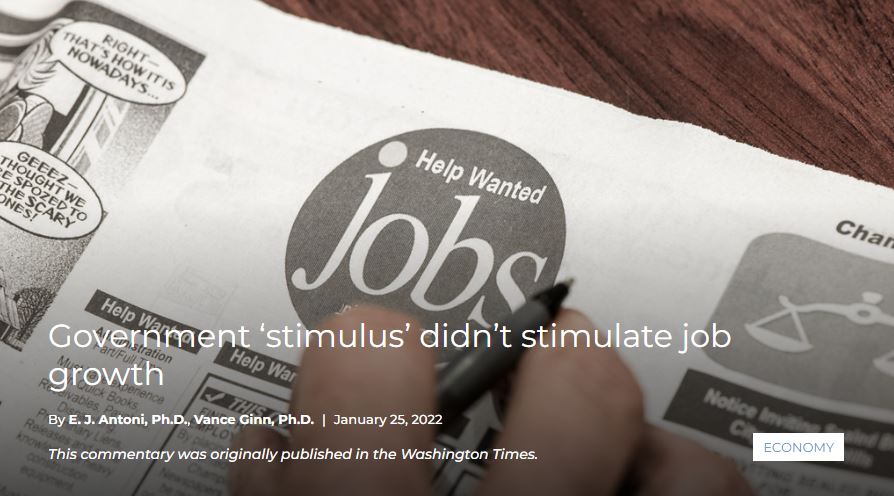 Texas’ public education spending, in inflation-adjusted dollars, has increased in recent years with little-to-no improvement in the quality of education received. A problem with the philosophy of throwing more money at the education problem expecting a different result is that it doesn’t work. As you can see in Figure 1, per-student education expenditures have been volatile and are currently on the rise. This is interesting as a recent University of Texas study finds that 47 percent of Texas voters believe too little is spent on education. Where is the money going? From FY 1993 to FY 2015, student enrollment at public schools in Texas increased by 48 percent while non-teaching staff increased by 66 percent and teachers increased by only 56 percent. Public education spending should be dedicated to benefitting students, not excessively expanding administrative staff at schools. Moreover, Texas teachers are only receiving roughly 21 percent of classroom expenditures, which is abysmal considering the importance of teachers. The average Texas teacher makes $51,891 per year, which may not be enough to attract the most talented teachers possible. If the increase in non-teaching staff had matched the increase in the student enrollment, Texas teachers could be earning an additional $6,318 per year. Despite what a plurality of Texans think, Texas should not just continue increasing per-student public education expenditures without focusing on the level of student achievement. By making major reforms to the state’s school finance system through student-centered funding and considering a simpler funding source, more students, teachers, and Texans can flourish. www.texaspolicy.com/blog/detail/should-texas-keep-increasing-public-education-spending Does Texas need more money for public education? This question can cause heated debates, which were on full display during the 85th Texas Legislature’s regular and special sessions.
Although most of the debate has centered on how much money has been or should be spent, the focus should not be on taxpayer dollars spent, but really on how best to increase student achievement. Read this paper to learn more: https://www.texaspolicy.com/content/detail/texans-need-more-education-for-their-money. Spending More Taxpayer Money Won't Solve School Finance System or Property Tax Flaws in Texas7/11/2017 Read the entire post with figures here: https://www.texaspolicy.com/blog/detail/spending-more-wont-solve-school-finance-or-property-tax-flaws-in-texas
VIDEO: Capital Tonight Interview on Texas budget, education choice, property tax, and more #txlege6/13/2017 Watch my explanation of the Conservative Texas Budget, school finance reform, property tax reform, and more in the @TXCapTonight interview at time 4:30 here: http://www.twcnews.com/tx/austin/capital-tonight/2017/06/13/capital-tonight-june-13--a-day-in-the-life-of-a-cps-caseworker.html
The Texas Senate passed an education choice bill (SB 3), that was amended many times (overview of the latest version) last Thursday that allows lower income households and students with special needs to apply for an education savings account (ESA). It will allow an opportunity to access taxpayer dollars for education services that best meets students' needs instead of them too often being stuck at a public school that doesn't do so.
I'd prefer that the final product of SB 3 was more like the original so it would be a more universal ESA program. This would have allowed many more students the opportunity to use this program. Regardless, SB 3 is a great step forward for students, teachers, parents, and Texas! The bill will go to the House now and hopefully make its way to the Governor. It's got an uphill battle, but students and families should have choices in education, just like they do with so many other goods and services, besides only those with the means to afford it. The Texas Public Policy Foundation along with several other organizations were a key part of the fight for passing SB 3. I had the honor of helping out in that process, as I was surrounded by many individuals who are passionate about providing students, parents, teachers, and all Texans the best opportunities to succeed in the education system. Here's my recent testimony that summarizes research on fiscal, academic, teacher pay, and economic effects of educational choice through ESAs. Here is my paper, The Effects of Education Savings Accounts on Teacher Pay in Texas, co-authored with Dr. John Merrifield of the University of Texas at San Antonio that highlights the fiscal savings of ESAs and the resulting opportunities for increases in teacher pay. Here's a summary: "Although public school districts employ roughly 90 percent of teachers in Texas, teachers have little negotiating power in today’s labor market. Budget reallocations at public school districts (with fiscal savings of $165 million) and private schools from ESAs could increase teacher salaries in the first year, with some increasing by as much as $28,000. A more competitive teacher labor markets will gradually contribute to increases in teacher salaries beyond those facilitated by ESAs and improvements in working conditions. It's clear that the freedom to choose in education and teacher labor markets will benefit students, teachers, and all Texans." Here is my paper, Economic Effects of a Universal ESA Program in Texas, co-authored with Dr. Marty Lueken of Ed Choice that summarizes the economic benefits, fiscal savings, and other positive effects of education choice in Texas. Here's a summary: "Expanding education choice is a smart and sound investment that Texas can make to grow the state’s economy and build a stronger society, creating better matches between students and their education will likely lead to fewer dropouts, which would improve social and labor market outcomes. By expanding school choice, will improve the quality of education for Texas children, lead to higher property values, and spur job creation." Of course, the results of the passed SB 3 will be less than a universal ESA program in our studies, but the fact remains that by allowing student-centered funding to replace the currently fundamentally flawed school finance system of school district-centered funding, many more students will be able to best meet their needs and benefit in the process. Let's hope that SB 3 becomes law and that it is the first step toward a universal ESA program in Texas! Expanding education choice is a smart and sound investment that Texas can make to grow the state’s economy and build a stronger society, creating better matches between students and their education will likely lead to fewer dropouts, which would improve social and labor market outcomes. By expanding school choice, will improve the quality of education for Texas children, lead to higher property values, and spur job creation. Originally posted at TPPF. Although public school districts employ roughly 90 percent of teachers in Texas, teachers have little negotiating power in today’s labor market. Budget reallocations at public school districts and private schools from ESAs could increase teacher salaries in the first year, with some increasing by as much as $28,000. A more competitive teacher labor markets will gradually contribute to increases in teacher salaries beyond those facilitated by ESAs and improvements in working conditions. It's clear that the freedom to choose in education and teacher labor markets will benefit students, teachers, and all Texans. Video & Handout of Testimony on Revamping #Texas' School Finance System #txlege @TxEdFreedom @TPPF1/27/2017 A simpler and efficient school finance system would be one that provides equitable student-centered funding paid for by taxes collected from a reformed sales tax.
Video of my testimony begins at times 3:08:20: http://tlcsenate.granicus.com/MediaPlayer.php?view_id=42&clip_id=11595. Here is the handout of my testimony: http://www.texaspolicy.com/content/detail/revamping-texas-school-finance-system. |
Vance Ginn, Ph.D.
|
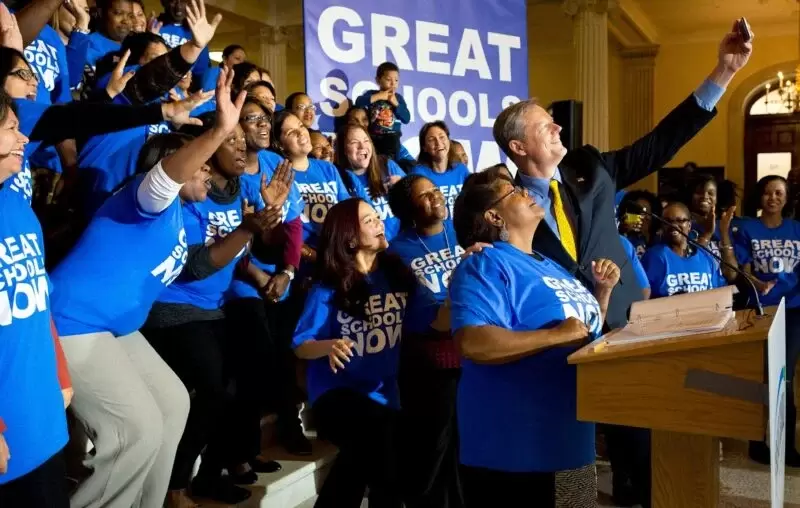

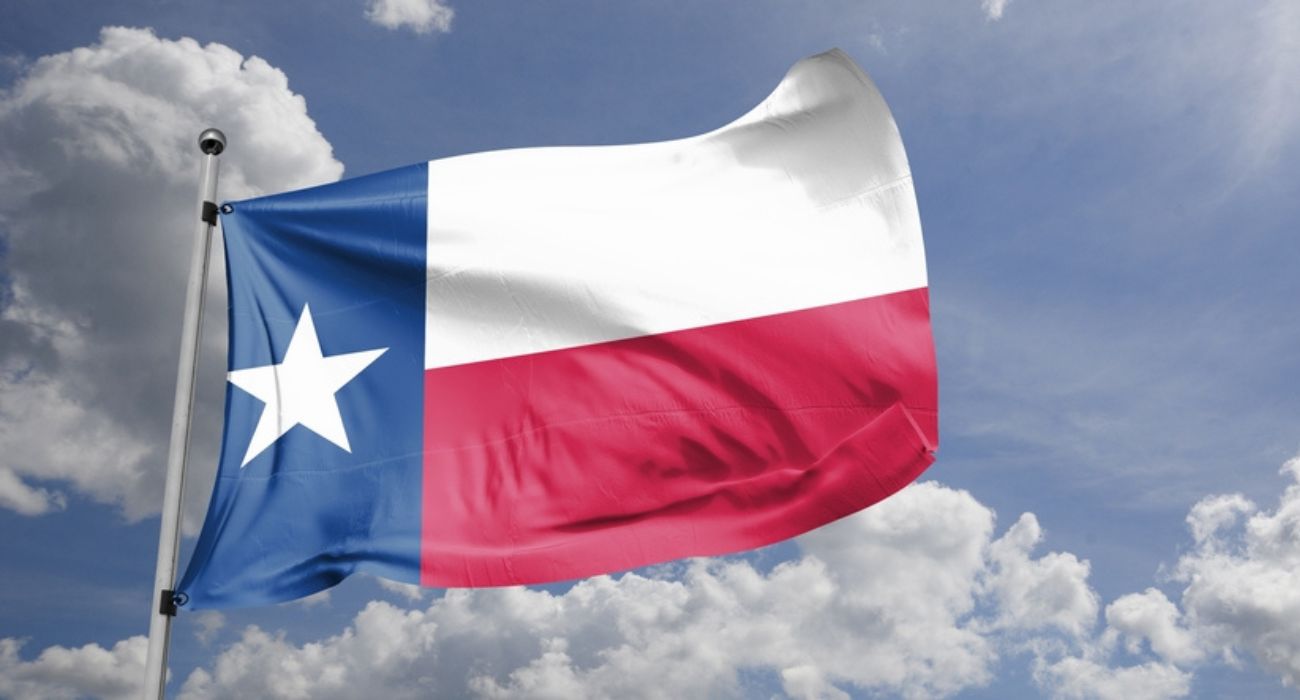
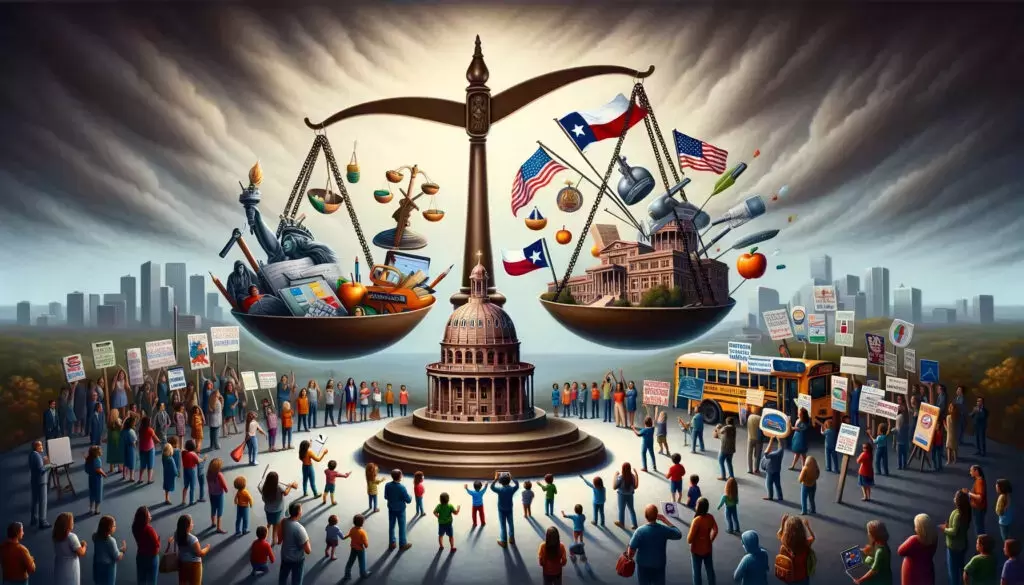
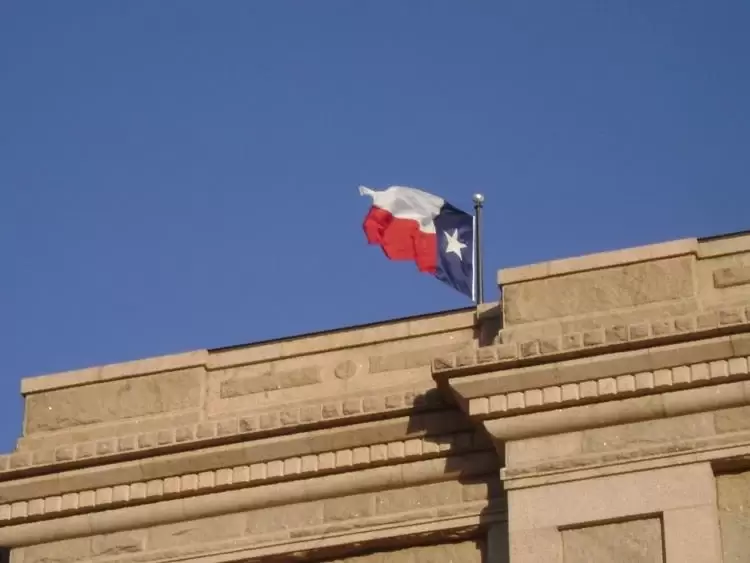
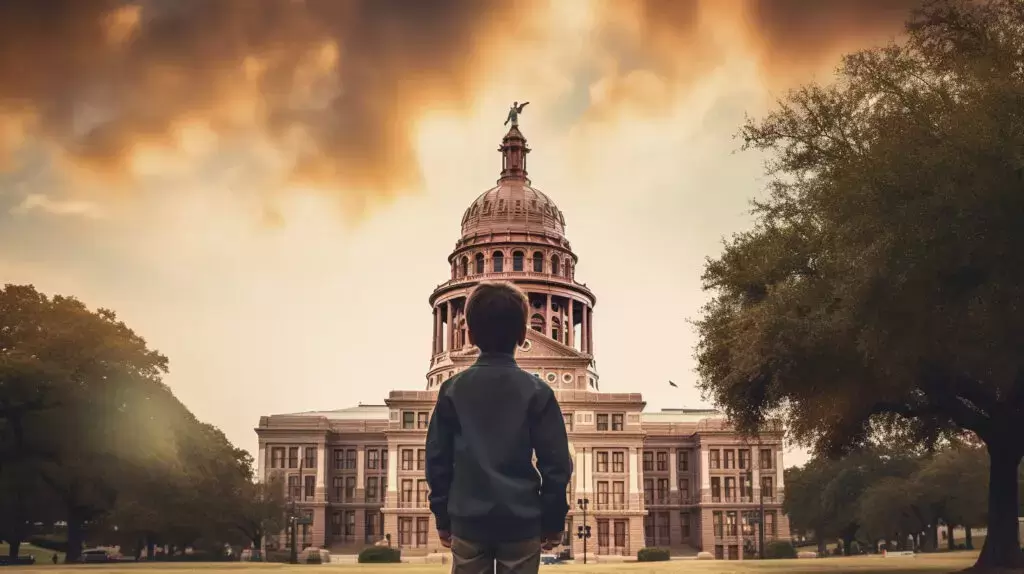
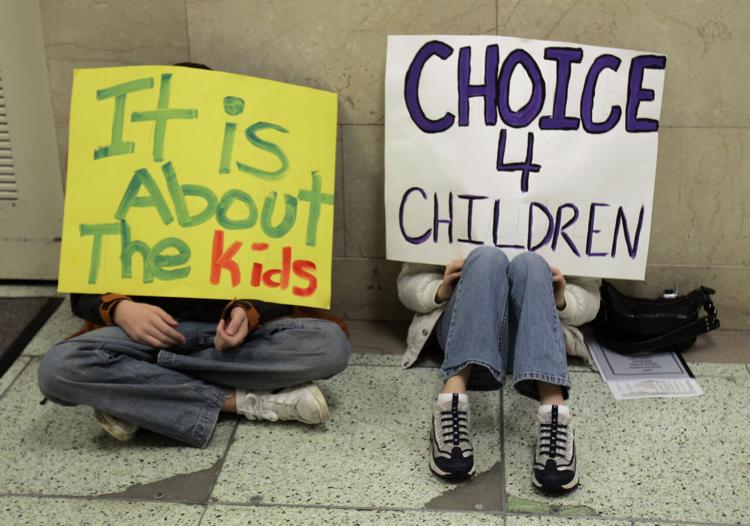
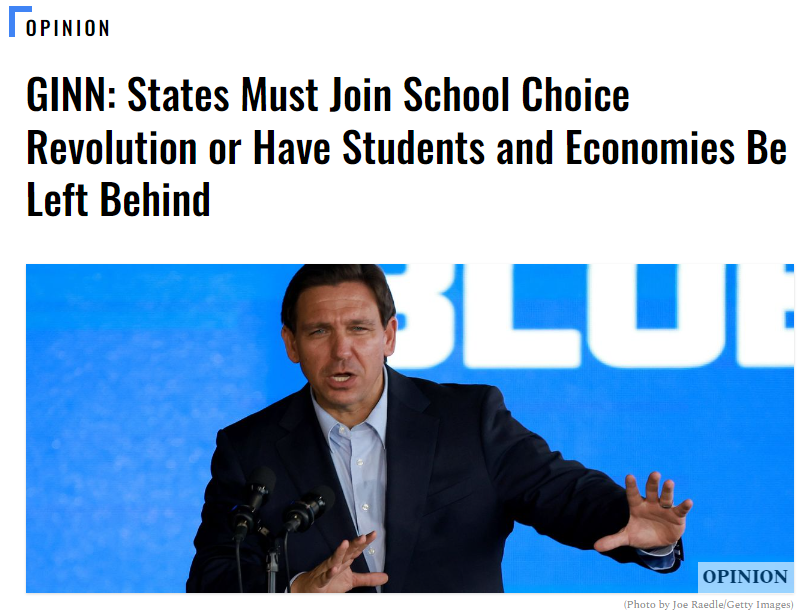
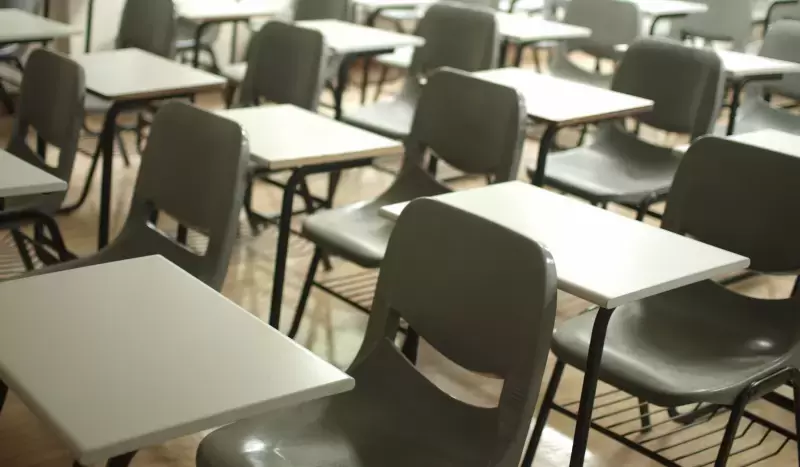

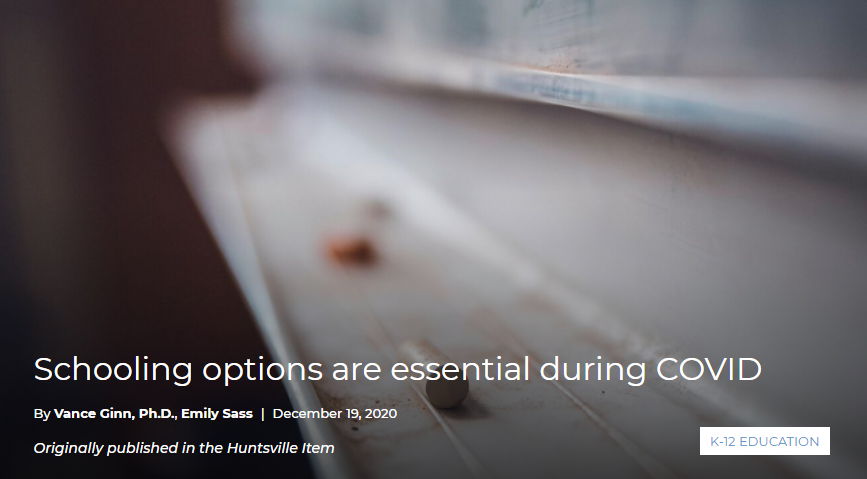
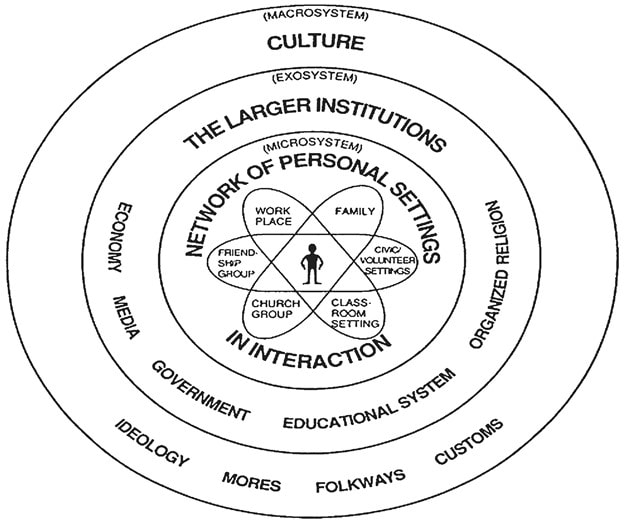





 RSS Feed
RSS Feed